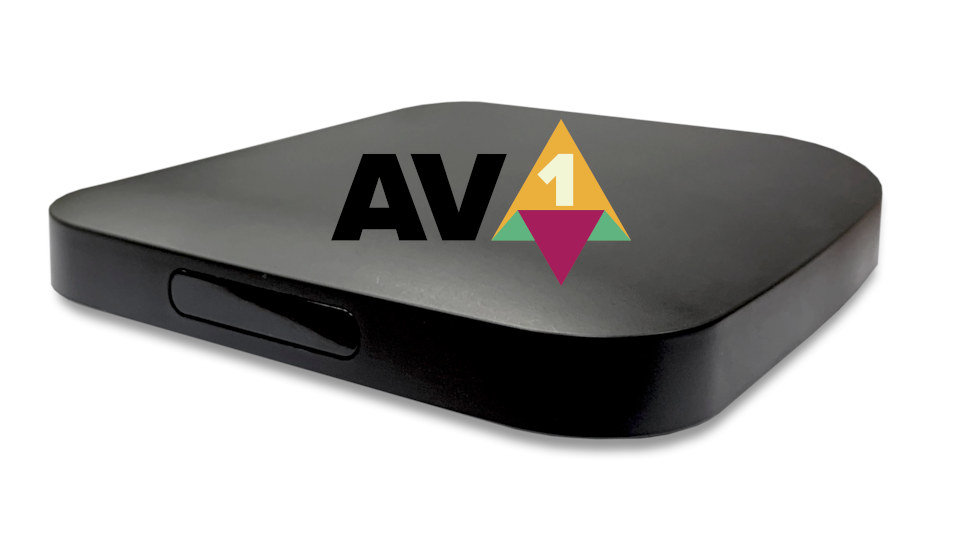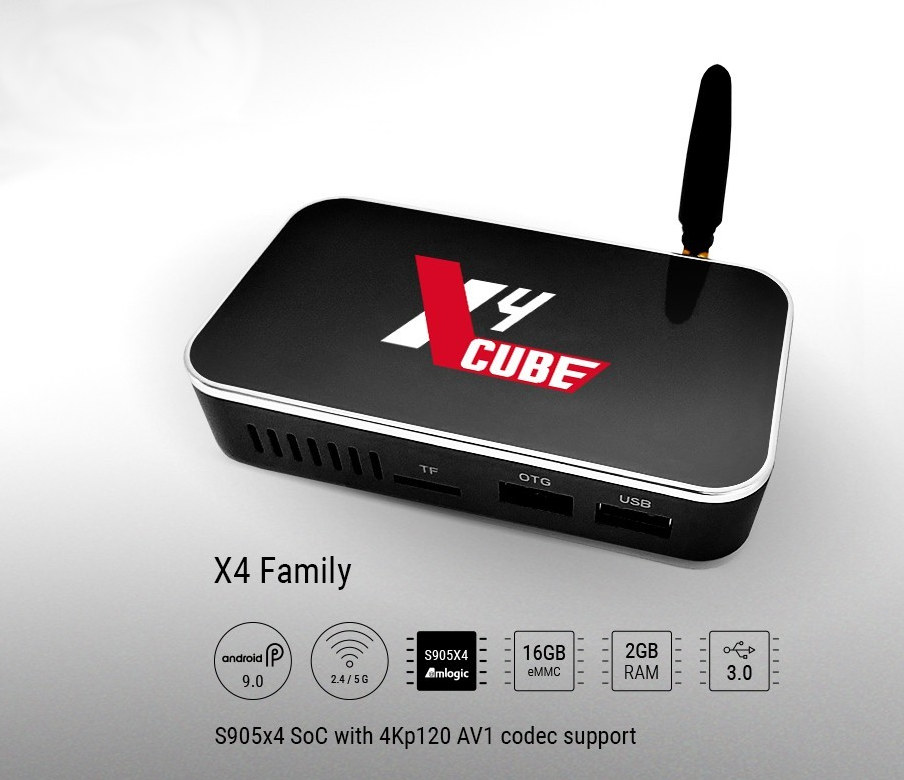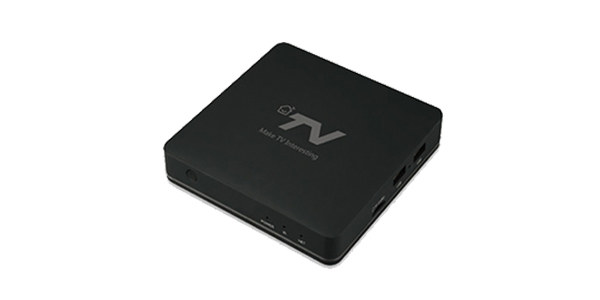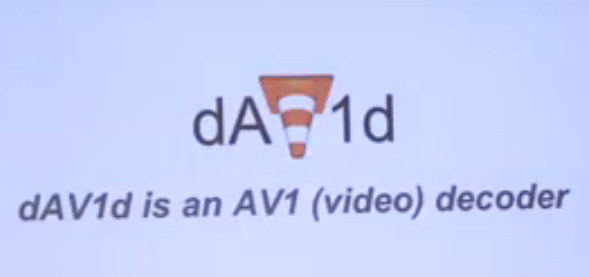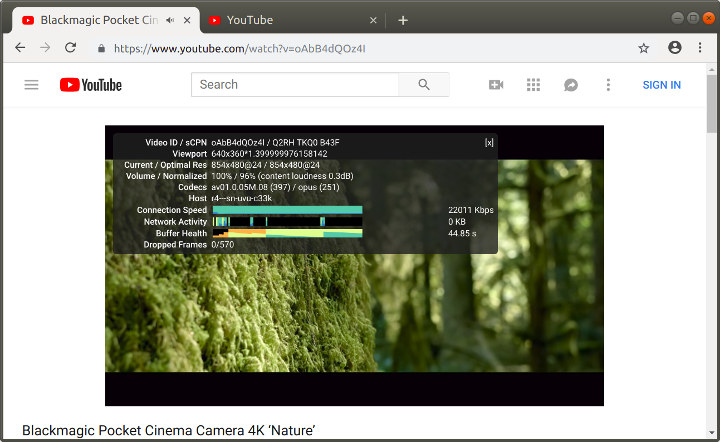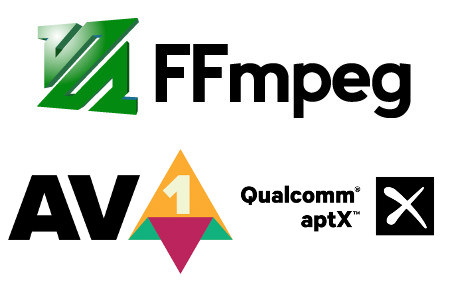4K TV boxes capable of playing AV1 content are coming later this year. Many of the entry-level models will feature Amlogic S905X4 processor, but some higher-end set-top boxes will instead be equipped with Broadcom BCM7218X or Realtek RTD1319 processor with better video post-processing capabilities and often more extensive DRM support which can be important to operators. Dune HD AV1 4K TV box is coming later this year with Realtek RTD1319 media processor, and support for either Android 10 AOSP or Android TV for Android 10. Dune HD AV1 4K TV box specifications: SoC – Realtek RTD1319 quad-core Arm Cortex A55 processor with Mali-G31 GPU with OpenGL ES 3.2 API support System Memory – 2 GB RAM Storage – 16 GB flash (32 GB or more as an option) Video & Audio Output – HDMI 2.1 up to 4Kp60 with HDR support, 3.5mm AV port with composite video and analog stereo […]
Ugoos X4 Cube Android 9.0 TV Box Plays 4Kp120 AV1 Videos
AOMedia AV1 video codec has been in the works for several years, and has strong industry backing since it’s open-source, royalty-free and delivers compression similar or even superior to H.265. Some services like YouTube and Netflix have already started using AV1 on PCs where the CPU is powerful enough to handle software video decoding. But relying on software video decoding is not ideal on typical Arm-based devices, either because of battery life concerns (e.g. phones) or simply impossible because the processor won’t be able to cope. The latter is especially the case on TV boxes who are not usually fitted with Arm Cortex-A53 cores leaving hardware video decoding to a video processing unit (VPU). Since AV1 is still fairly new, most VPU doesn’t support the new video codec, and while we have seen several AV1 capable processors including Broadcom BCM7218x, Realtek RTD1311/RTD1319, and Amlogic S905X4. as well as at least […]
SDMC DV8919 Amlogic S905X4 Android TV 10 TV Box Supports AV1 Decoding
We’ve previously covered several TV box & set-top box SoCs with support for the royalty-free AV1 video codec including Broadcom BCM7218X SoC, and Amlogic S805X2, S905X4, and S908X processors. But so far, apart from an AV1 demo on the RTD1311/RTD1319 development board (Pymparticle EVB?), and new about Technicolor Jade STB, I had not really seen AV1-capable TV boxes so far. SDMC DV8919 appears to be the first Amlogic S905X4 TV box on the market and one of the first running the recently released Android 10 on Android TV OS. SDMC DV8919 specifications: SoC – Amlogic S905X4 quad-core Arm Cortex-A55 processor @ up to 2.0 GHz with Arm Mali-G31MP2 supporting OpenGL ES3.2, Vulkan 1.1 and OpenCL 2.0 System Memory – 2GB DDR memory (options: 1GB or 4GB) Storage – 8GB eMMC flash (options: 16GB, 32GB, 64GB), MicroSD card slot Video Output – HDMI 2.1 up to 4K @ 60+Hz with CEC […]
Amlogic S805X2, S905X4, and S908X AV1 Full HD/4K/8K Media Processors to Launch in 2020
AOMedia AV1 open, royalty-free video codec has come a long way since it was first introduced in 2016, and we’ve recently seen AV1 hardware video decoding integrated into higher-end STB SoCs such as Broadcom BCM7218X or Realtek RTD1311/RTD1319 processors. But AV1 codec is also coming to lower-cost media processors as shown by Amlogic 2020 roadmap below. We should expect at least three new AV1 capable processors in 2020. Amlogic S905X4 Specifications: CPU – Quad-core Arm Cortex-A55 processor GPU Arm Mali-G31MP2 Video 4Kp75 H.265, VP9, AVS2 4Kp120 AV1 HDR support Smart Audio Voice Activity Detector (VAD) Asynchronous Sample Rate conversion (ASRC) Equalizer (EQ) Dynamic Range Compression (DRC) 2x DSP for audio front end (AFE) and wake word engine (WWE) Amlogic S905X4 looks like an update to Amlogic S905X3 with AV1 codec support, and maybe extra audio features. Amlogic S908X We’ve previously seen Rockchip RK3588 with Cortex-A76 / A55 cores, 8K video […]
Broadcom BCM7218X STB SoC Comes with AV1 Hardware Decoding, WiFi 6
CNX Software first covered AV1 open-source, royalty-free video codec aiming to compete against H.265 and succeed VP9 in 2016. I also tried the reference implementation and both encoding and decoding were really slow at that time and an AMD FX8350 powered computer would only achieve 0.36 fps encoding on a 352 x 288 video, while decoding was much faster at over 1,000 fps. This was really early work, and the final AV1 specifications were only released in March 2018, before companies like YouTube and Netflix started to publish AV1 video samples, and now I’ve noticed the former is sometimes streaming videos using AV1 codec on desktop computers and laptops. This still relies on software decoding, and most Arm platforms and entry-level level Intel computer may not be able to handle AV1 decoding, so hardware decoding will eventually be required, especially on battery-operated devices since it will consume much less power. […]
Dav1d Open Source AV1 Decoder Aims to be Fast and Lightweight
Lots of efforts are being put into AV1 open source, royalty-free video codec with the AV1 specification published in March, and companies like YouTube and Netflix having recently uploaded AV1 video samples for testing and evaluation. We also reported FFmpeg 4.0 was released with AV1 supporting using libaom reference decoder. However, the library is not really optimized for code size and speed, but instead just to demonstrate AV1 decoding and encoding. So VideoLAN, VLC and FFmpeg communities have been working on another decoder called Dav1d – which stands for “Dav1d is an AV1 Decoder” – that aims to be lightweight, cross-platform, fast and open source. Some of the technical details about dAV1d include: written in C99 without VLAs (Variable Length Arrays) ASM in NASM/GAS syntax (no intrinsics), Meson/ninja buildsystem, Works on x86, x64, ARMv7, ARMv8 architectures for now Runs on Windows, Linux, macOS, Android, iOS operating systems Licensed under BSD […]
AV1 Video Samples Now Available on YouTube & Netflix
We first covered AV1 royalty-free, open source video codec in 2016, which with backing from companies like Google, Amazon, Intel, Microsoft, and many others with the aim to compete with H.265, and lower the cost of delivering video both thanks to a better compression ratio, and the lack of royalties. Since then progress has been made, with AV1 specifications released last March, and now both YouTube and Netflix are offering some beta AV1 video samples for testing. If you want to play some videos in AV1 format in YouTube as I did in the screenshot above, you’d need to install a very recent (beta) version of Chrome or Firefox, follow the other instructions as explained in YouTube’s AV1 beta playlist: Support for AV1 in MP4 within Media Source is available in Chrome 70, and Firefox 63 builds newer than September 13 with the media.av1.enabled pref set. Using a supported browser […]
FFmpeg 4.0 Released with Initial AV1 Support, aptX, etc..
Whenever you are playing videos on a machine running Linux, Android or Windows, chances the software is at least partially using code from FFmpeg, a free software project that produces libraries and programs for handling multimedia data. The developers just outed a new major release FFmpeg 4.0 “Wu” which adds new filters, more hardware features, drops Windows XP and ffserver, implements initial AV1 codec support, aptX, TiVo ty+, and more. FFmpeg 4.0 includes the following libraries version:
|
1 2 3 4 5 6 7 8 |
libavutil 56. 14.100 libavcodec 58. 18.100 libavformat 58. 12.100 libavdevice 58. 3.100 libavfilter 7. 16.100 libswscale 5. 1.100 libswresample 3. 1.100 libpostproc 55. 1.100 |
and some of the main changes include: Bitstream filters for editing metadata in H.264, HEVC and MPEG-2 streams Experimental MagicYUV encoder TiVo ty/ty+ demuxer Intel QSV-accelerated MJPEG encoding & overlay filter native aptX and aptX HD encoder and decoder NVIDIA NVDEC-accelerated H.264, HEVC, MJPEG, MPEG-1/2/4, VC1, VP8/9 hwaccel decoding mcompan & acontrast audio filters OpenCL overlay filter video mix filter video normalize filter audio lv2 wrapper filter VAAPI MJPEG and VP8 decoding […]


